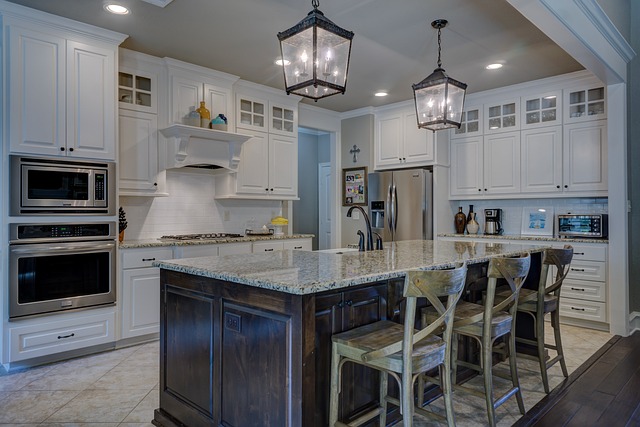A Guide to Choosing the Right Kitchen Hood for Your Home
Selecting the perfect kitchen hood for your home can significantly impact your cooking experience, indoor air quality, and kitchen aesthetics. A quality hood removes cooking odors, grease, and harmful contaminants that otherwise would circulate throughout your living space. With numerous styles, sizes, and features available on the market, finding the ideal kitchen hood requires understanding your specific needs and kitchen configuration.

Choosing a Kitchen Hood: Key Factors to Consider
When selecting a kitchen hood, several critical factors should guide your decision. First, consider the size of your cooking surface—as a general rule, your hood should be at least as wide as your cooktop, though many experts recommend choosing a hood that’s 3-6 inches wider for optimal ventilation. Second, evaluate your cooking habits; if you frequently cook with strong odors or high heat, you’ll need a more powerful extraction system. Third, understand your kitchen’s layout and whether ducted or ductless ventilation is appropriate for your space. Ducted systems expel air outside your home, while ductless options filter and recirculate air back into the kitchen.
Modern Hood Designs: Blending Function with Style
Today’s kitchen hoods go beyond mere functionality to become striking design elements. Wall-mounted chimneys create a dramatic focal point, while island hoods make a statement above centrally-located cooktops. For a minimalist approach, under-cabinet hoods offer efficient extraction while remaining nearly invisible when not in use. Ceiling-mounted hoods provide a sleek solution for open-concept kitchens, and fully integrated custom hoods can be designed to match your cabinetry perfectly. Many contemporary designs incorporate smart features like automatic sensors that adjust fan speed based on cooking conditions, programmable timers, and even voice control capabilities that integrate with home automation systems.
Kitchen Ventilation and Airflow: Technical Considerations
Effective kitchen ventilation depends on proper airflow mechanics. The hood’s extraction power, measured in cubic feet per minute (CFM), should match your cooking needs. For a standard four-burner electric cooktop, 400-600 CFM typically suffices, while gas ranges or professional-grade appliances may require 600-1200 CFM for optimal performance. The hood’s placement is equally important—installation height should follow manufacturer recommendations, usually 24-30 inches above electric cooktops and 28-36 inches above gas ranges. For maximum efficiency, ensure the hood covers the entire cooking surface and extends slightly beyond it. Consider factors like duct size, minimizing bends in ductwork, and the shortest possible route to outside ventilation to maintain airflow efficiency.
Benefits of Upgrading Your Hood: Beyond Basic Ventilation
Replacing an outdated kitchen hood delivers numerous advantages. Modern hoods reduce indoor air pollution by removing cooking particulates, carbon monoxide, and nitrogen dioxide that can trigger respiratory issues. They prevent grease accumulation on cabinetry and walls, reducing cleaning frequency and extending the life of kitchen finishes. Energy-efficient models with LED lighting consume significantly less power than older units while providing better illumination of cooking surfaces. Many contemporary hoods incorporate noise-reduction technology, operating at whisper-quiet levels even at higher extraction settings. Additionally, an upgraded hood can increase your home’s value, with real estate professionals noting that modern kitchen ventilation is increasingly on buyers’ must-have lists.
Kitchen Hood Types and Pricing Comparison
When budgeting for a new kitchen hood, costs vary significantly based on type, features, and brand quality. Understanding the options can help you make an informed decision for your kitchen renovation project.
| Hood Type | Average Price Range | Key Features | Installation Complexity |
|---|---|---|---|
| Under-Cabinet | $100-$500 | Space-saving, basic functionality, limited CFM | Low to Moderate |
| Wall-Mounted Chimney | $300-$1,500+ | Stylish designs, higher CFM, better coverage | Moderate |
| Island/Ceiling Mount | $700-$2,000+ | 360° access, premium aesthetics, powerful ventilation | High |
| Insert/Custom | $400-$1,200+ | Seamless integration, hidden components, customizable | Moderate to High |
| Professional-Grade | $1,000-$3,500+ | Highest CFM, commercial features, stainless steel construction | High |
Prices, rates, or cost estimates mentioned in this article are based on the latest available information but may change over time. Independent research is advised before making financial decisions.
Hood Installation and Maintenance Guide
Proper installation ensures your kitchen hood performs optimally. While professional installation is recommended, especially for ducted systems requiring structural modifications, some homeowners with electrical and basic construction experience may tackle simpler under-cabinet hood installations. Essential maintenance includes cleaning or replacing filters regularly—grease filters typically need cleaning every 1-3 months, while charcoal filters in ductless systems require replacement every 3-6 months. Wipe exterior surfaces with a mild degreaser suitable for your hood’s material, whether stainless steel, glass, or painted surfaces. Check and clean ductwork annually to remove grease buildup that could become a fire hazard. For hoods with lighting features, replace bulbs promptly when needed and ensure electrical connections remain secure. Following the manufacturer’s specific maintenance schedule will extend your hood’s lifespan and maintain its efficiency.
Selecting the right kitchen hood balances functional requirements with aesthetic preferences and budget considerations. A properly chosen and maintained hood not only keeps your kitchen fresh and clean but also contributes to healthier indoor air quality and preserves your home’s finishes. Whether you opt for a basic functional model or a statement piece with advanced features, understanding the key factors in hood selection enables you to make an informed choice that enhances your kitchen for years to come.




